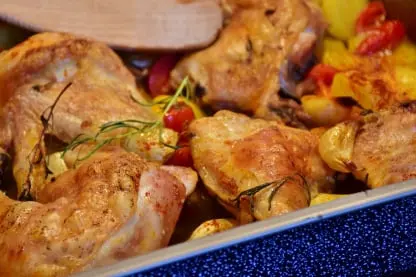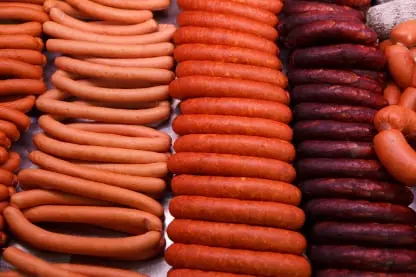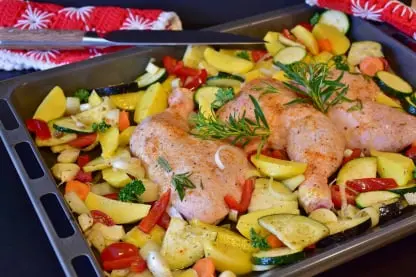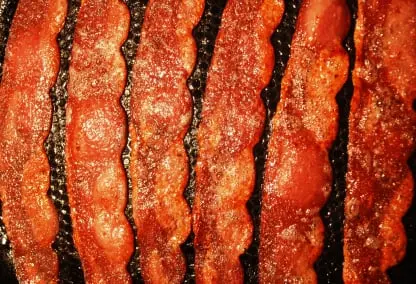Meat Food safety app: with A.I. powered Food Safetys.
Meat Food safety app with AI Food Safety for better quality meat packing, processing, storage. Manage meat quality, traceability, inventory, labels, shipping, sales and meat export.

Meat Supplier Food Safety & management
Buying and transporting raw meat
Separate raw meat from other foods in your shopping trolley or basket.
If the meat isn't in leakproof packaging, put it in plastic bags to stop juices from dripping onto other foods.
When you are transporting raw meat, keep it cool in a chilly bin or bag, especially during summer. Use ice packs on hot days and if you won’t be getting home for a while. Also keep meat as far away from car or bus windows as possible.
Storing meat at home
Don’t leave raw meat out at room temperature. Always store it in the fridge or freezer.
Store raw meat away from any cooked food or food that doesn’t get cooked (like raw fruit, vegetables, and salad).
The best place to store raw meat is at the bottom of your fridge. This stops any leaking juices (which may contain harmful bacteria) from dripping onto other foods.
Storing raw meat in containers will catch any juices and save unnecessary cleaning up. Make sure containers are cleaned after use.
When you marinate meat, keep it in the fridge in a sealed container.
Preparing raw meat
Ensure meat juices do not drip onto other foods.
Completely defrost frozen meat before cooking to make sure it cooks evenly. Don’t defrost it at room temperature on the benchtop – prepare ahead and defrost it overnight in your fridge. If you forget or are short on time, use the defrost setting on your microwave.
Do not wash meat (especially chicken meat) before cooking. Washing can create puddles and sprays of raw meat juice that spread bacteria around the kitchen.
Ideally, use separate chopping boards, utensils, and serving plates for raw meat. If you only have one board or knife, make sure to clean it with hot, soapy water after using it for meat.
Wash your hands with soap and hot water immediately after handling raw meat to prevent any cross-contamination with other surfaces or foods.

Meat Food Safetys during production
View app Specifications.
Cooking meat and meat products
Usually when meat is available in whole pieces, like fillets or cuts, bacteria only sits on the surface. As soon as it is minced, bacteria gets transferred throughout the product. Therefore, minced meat needs to be cooked thoroughly.
Intact steaks only need surface cooking (searing or flame grilling).
All other meat and meat products need to be cooked through. This includes blade-tenderized steaks (often pre-marinated), poultry meat, and all minced meat products (like beef, pork, chicken, or lamb burgers, and sausages and dumplings).
Cook meat all the way through, until juices run clear.
If you can, use a meat thermometer to check it’s cooked through. Insert it into the middle of the thickest part of the meat. It should read an internal temperature of 75 degrees Celsius for 30 seconds after cooking, 70 degrees Celsius after 3 minutes, or 65 degrees Celsius after 15 minutes.
Convenience foods that contain minced meat might look cooked, but the meat in the centre could still be undercooked. In particular, be mindful with frozen products like chicken nuggets or dumplings.
Never place cooked meat or meat products onto the same dish or board that held raw meat.
Do not serve cooked meat with the same utensils used for raw meat.
Heat leftover marinade to boiling before pouring it onto cooked meat and meat products.
Reheat leftovers thoroughly – until steaming hot (over 75 degrees Celsius) – and do not reheat more than once.
If in doubt, cook the meat or meat products for longer or throw it out.

Meat Food safety & management
Handling meat
Wash your hands frequently when preparing any type of meat, fish, or poultry. Bacteria can quickly spread between your hands and meat. Always wash your hands with soap and water for at least 20 seconds before and after handling meat, whether it’s raw or cooked.
Because bacteria can spread easily, prepare the meat on a surface that’s separate from all other cooking materials. Keep vegetables and other ingredients away from meat, especially if you aren’t cooking them together in the same dish.
Try to use separate cutting boards, clean all cooking utensils after they touch raw meat, and use different utensils to serve food after you’ve prepared it.
Storing meat
Uncured, raw meat generally lasts safely for around three days in the refrigerator. If you plan to keep uncooked meat longer, freezing it is your best bet. Seal the meat in an airtight package before freezing. Then, it can usually be frozen for at least several months.
Safe freezing and refrigeration time also depends on the storage temperature. Keep your freezer as close to 0°F (-17.8°C) as possible. This helps retain nutrients and keep food fresh. Keep your refrigerator at around 34°F (1.1°C), just above freezing, to effectively prolong the shelf life of foods.
Below are general guidelines for how long basic meats can be kept safely if they’re stored properly.

Daily Meat factory hygiene checklist
Chill: Refrigerate promptly.
Bacteria can multiply rapidly if left at room temperature or in the “Danger Zone” between 40°F and 140°F.
Keep your refrigerator at 40°F or below and your freezer at 0°F or below, and know when to throw food out before it spoils. If your refrigerator doesn’t have a built-in thermometer, keep an appliance thermometer inside it to check the temperature.
Package warm or hot food into several clean, shallow containers and then refrigerate. It is okay to put small portions of hot food in the refrigerator since they will chill faster.
Refrigerate perishable food (meat, seafood, dairy, cut fruit, some vegetables, and cooked leftovers) within 2 hours. If the food is exposed to temperatures above 90°F, like a hot car or picnic, refrigerate it within 1 hour.
Thaw frozen food safely in the refrigerator, in cold water, or in the microwave. Never thaw food on the counter because bacteria multiply quickly in the parts of the food that reach room temperature.